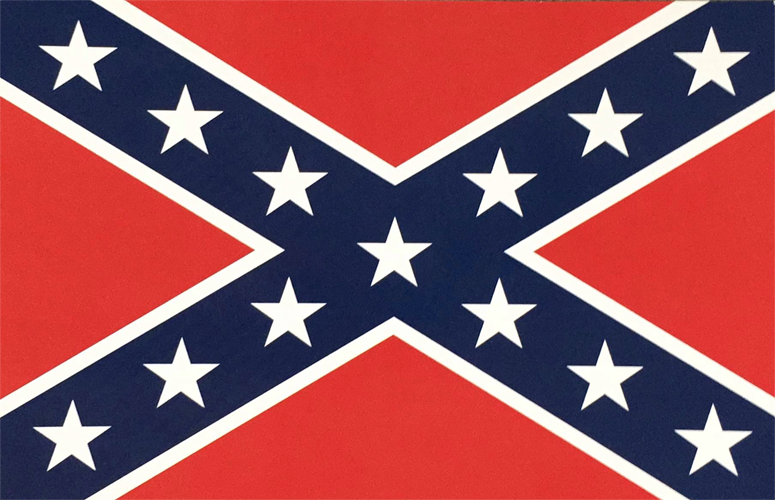By Reggie Ellis
@Reggie_SGN
VISALIA – The Confederate flag is protected speech under the First Amendment, even for minors on a school campus. But it can be banned if the district finds that it is disruptive to the school or if it causes emotional distress by targeting a student, such as bullying.
That was the explanation Joshua Whiteside of Lozano Smith Attorneys provided the Visalia Unified School District on Jan. 23 before convincing board members to table any vote on updating its student dress code in reaction to a student who wore a sweatshirt with the Confederate flag. This was the second time that the school board was scheduled to approve adding the words “other hate groups” to the list of things students cannot reference on their clothing, jewelry or personal items. The first was on Nov. 7 when four students and an ACLU attorney asked the Visalia Unified School District board not to ban clothing that references hate groups because the rule would not go far enough to address underlying racial tension on campuses.
“There’s no real definition of hate group under the law, but statute does define gangs,” said Whiteside, referring to the current dress code that bans “writing, pictures or any other insignia which are crude, vulgar, profane or sexually suggestive, which bear drug, alcohol or tobacco company advertising, promotions and which promote violence, illegal activity, or relate to gang affiliation or activity; or which advocate racial, ethnic, religious or sexual orientation prejudice.”
Whiteside cited several court cases and bits of legislation to provide context to the argument of freedom of speech vs disruptive speech. In the landmark case of Tinker v. Des Moines Independent School District (1969), the U.S. Supreme Court ruled that students retain their First Amendment rights to freedom of speech even when they are at school unless it “materially disrupts classwork or involves substantial disorder or invasion of the rights of others.”
In the 2007 case Morse vs. Frederick, the Supreme Court ruled that any speech that promotes illegal activity (drug use in this case) can be regulated. In addition to that, the California Education Code Section 3281 allows schools to restrict anything promoting gang affiliation or violence in order to provide students with a safe learning environment.
The proposed addition of “other hate group” activity to the list of things banned from student clothing, jewelry and personal items in the dress code policy is already backed up by VUSD’s Board Policy 5145.9. Adopted in 2001, the “Hate Related Behavior Policy” states that “statements that degrade an individual on the basis of his/her race, ethnicity, culture, heritage, gender, actual or perceived sexual orientation, physical/mental attributes, religious beliefs or practices shall not be tolerated.”
Whiteside said the First Amendment prohibits any limitations on free speech in schools unless it meets one of the following criteria:
• It is vulgar or obscene
• It is libelous or slanderous, meaning untrue statements that attack someone’s reputation
• It is a threat of violence
• It promotes drugs or other illegal substances
• It is disruptive to the learning environment
• It targets a single student causing emotional distress
He said even those exceptions must be taken on a case-by-case basis to prevent the district creating a pattern of favoring one type of speech over another. In order to remove the board from initial discussions on those cases, Superintendent Dr. Todd Oto said Lozano Smith recommended forming a student-run committee, called the Student Inclusivity Task Force, of 18-20 sophomores and juniors who will serve two-year terms before cycling off the committee as they graduate. The task force would be facilitated by an adult, someone within the district, to help them stay focused and to supervise their meetings.
“This will provide a venue for students to offer an idea of the meaning of certain kinds of speech in a marketplace of ideas,” Whiteside said, “and avoid that marketplace becoming a shouting match.”
Oto said the district would also form an adult committee comprised of parents, community members and district staff. Oto continued that the student group would begin meeting by the end of February and the adult group by the end of March. Each group will have three meetings by the end of June and then the sub-committee of the student task force will present dress code changes to the adult group before both make recommendations to the board.
“We want to have a kid conversation that adults can listen to,” Oto said. “We want to get as diverse of a perspective as possible. This gives us a chance to be thoughtful and on the leading edge of controversial issues.”
The board voted to table the proposed changes to the dress code until after forming the two committees and discussing the changes with the adult and student committees.
